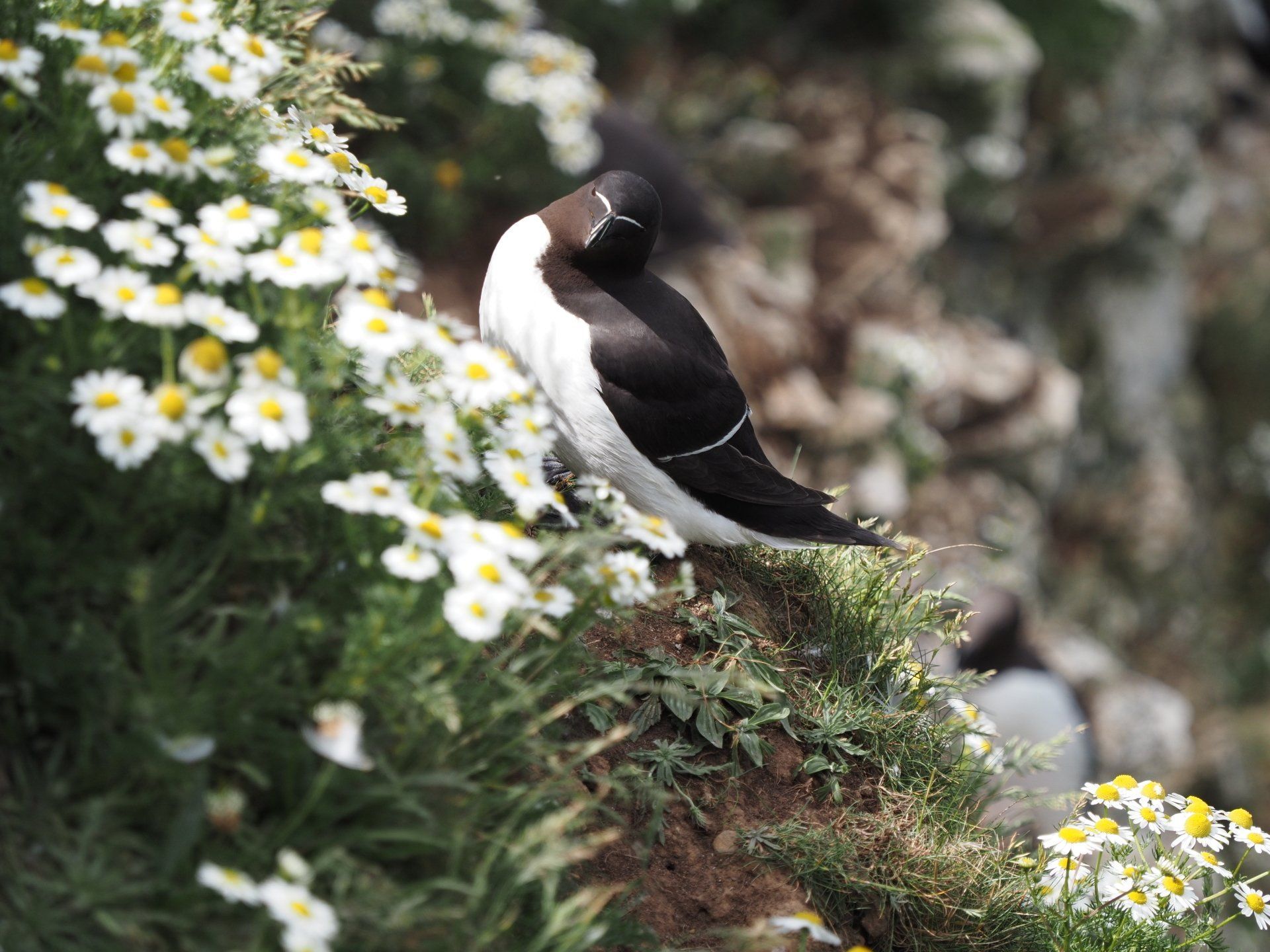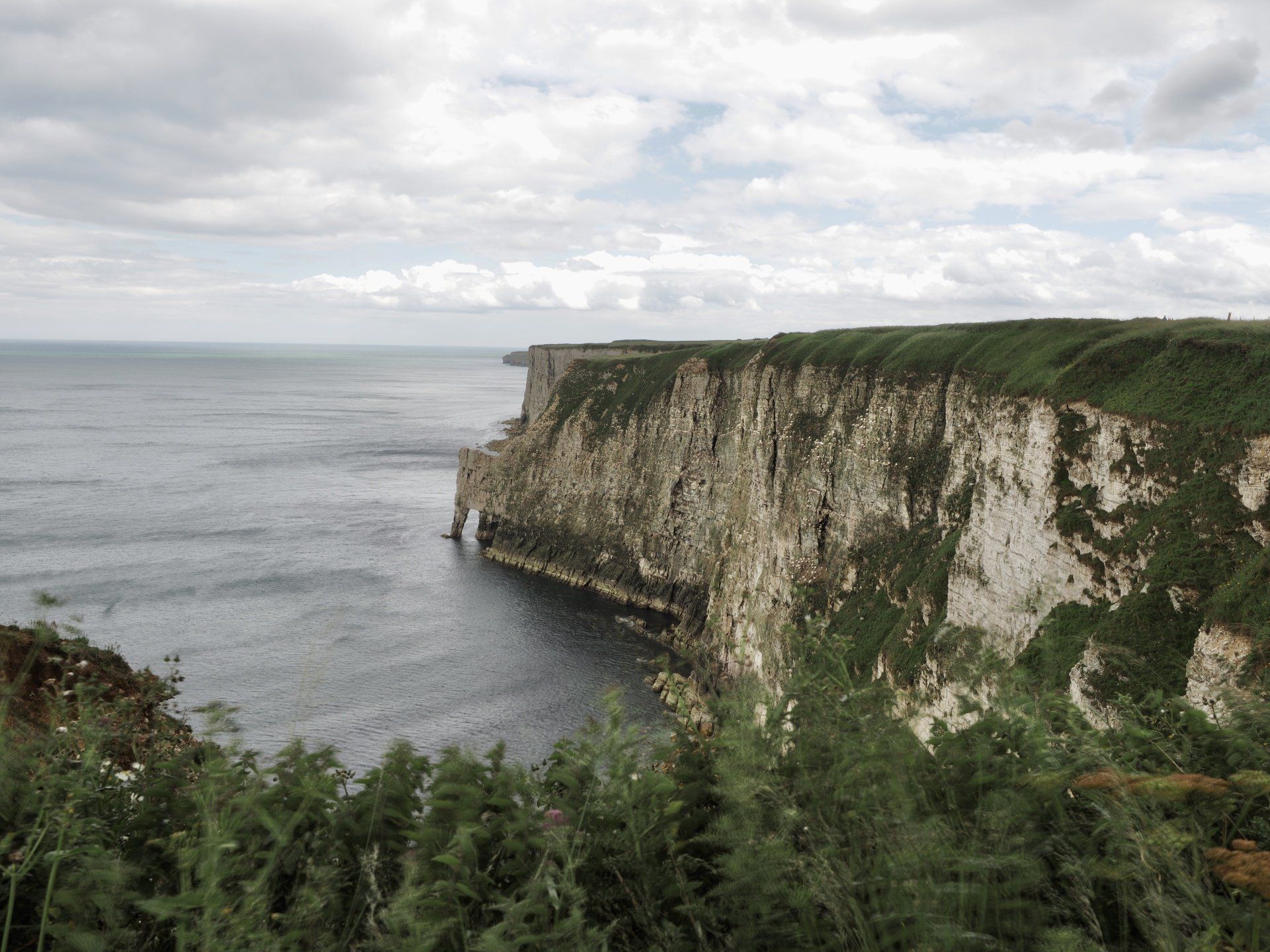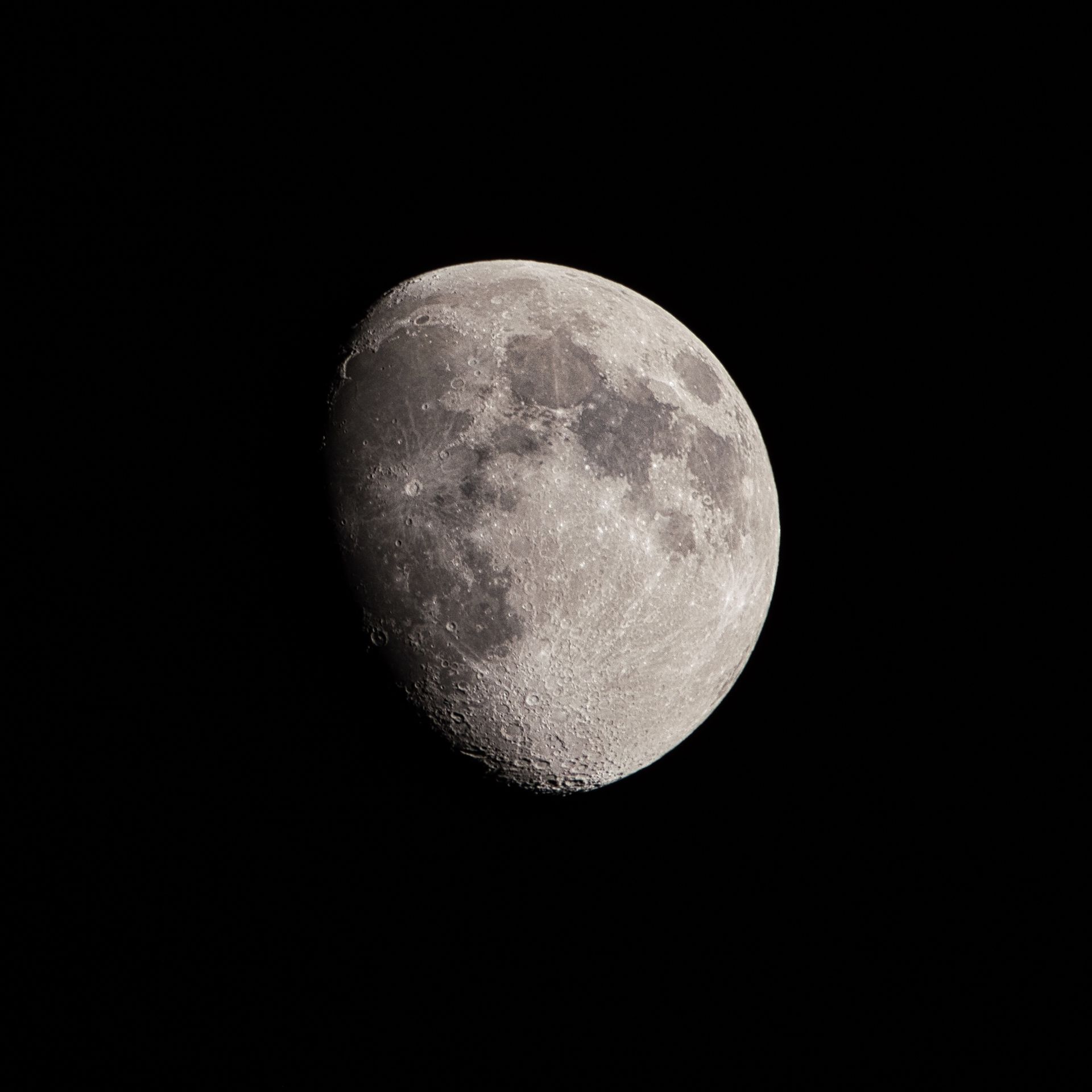RSPB Bempton Cliffs
Derek Smith • 30 June 2020
RSPB Bempton Cliffs
On Saturday 27th June, I visited the RSPB reserve at Bempton Cliffs. The visitor centre, and café are currently closed, but the toilets are open. The staff were very welcoming, and helpful, and the reserve wasn’t overly crowded. Most people abided to the Coronavirus 2 metre rule, but occasionally someone tried to squeeze in between with their camera or binoculars just to get a better view which was very annoying. Remember folks, that virus is still out there, I know that it’s exciting seeing the birds but do be very cautious around other people.
The Puffins were still there and nice to see them tucked into the cliffs. The Gannets were as noisy as ever, and I love seeing the Razorbills, they always look to me like masked bandits.
The weather was cloudy, windy, and cold with showers, I managed to get around before being caught in a heavy shower.
Stay safe and enjoy your photography.
Louth Photographic Society

Good Morning All I photographed this Treecreeper bird at Linwood Warren recently. We start back again this Wednesday 14th January with a PDI competition, the categories are "Insects" and "Open" to be judged by Colin Lusby of NELPS. The list of entries has been sent out and we have a good entry, fifty images altogether. The following week we hold our project night, "Prime Time", we have four members showing their images from the project. Regards Graham

The use of monochrome images seems to be coming back into fashion of late. Many of a certain generation will remember when monochrome was everywhere, television, newspapers, magazines, films, and our own photos (black and white film was less expensive), I remember in the mid sixties when the Sun newspaper (a broadsheet at that time) and the Daily Herald began a rivalry to publish the most colour photos into each edition. Monochrome images can sometimes convey a mood, and detail that’s not always evident in a colour photograph. Converting a digital colour image to monochrome can take a fair amount of skill, sometimes it’s helpful to visualise the image as a monochrome before even taking the photo, when editing the blacks have to be rendered as pure black, and the whites rendered as pure white, with a range of greys in-between, otherwise an image can look “muddy”. If your camera allows possibly try shooting some images in monochrome. Portraits, architecture, landscape, street photography, and trees often make the best monochrome images, and rarely wildlife, although my image of a lizard is quite effective. I shall be running a “Photo Editing” workshop on the 4th February, and members will have a chance to try converting colour digital images to monochrome.
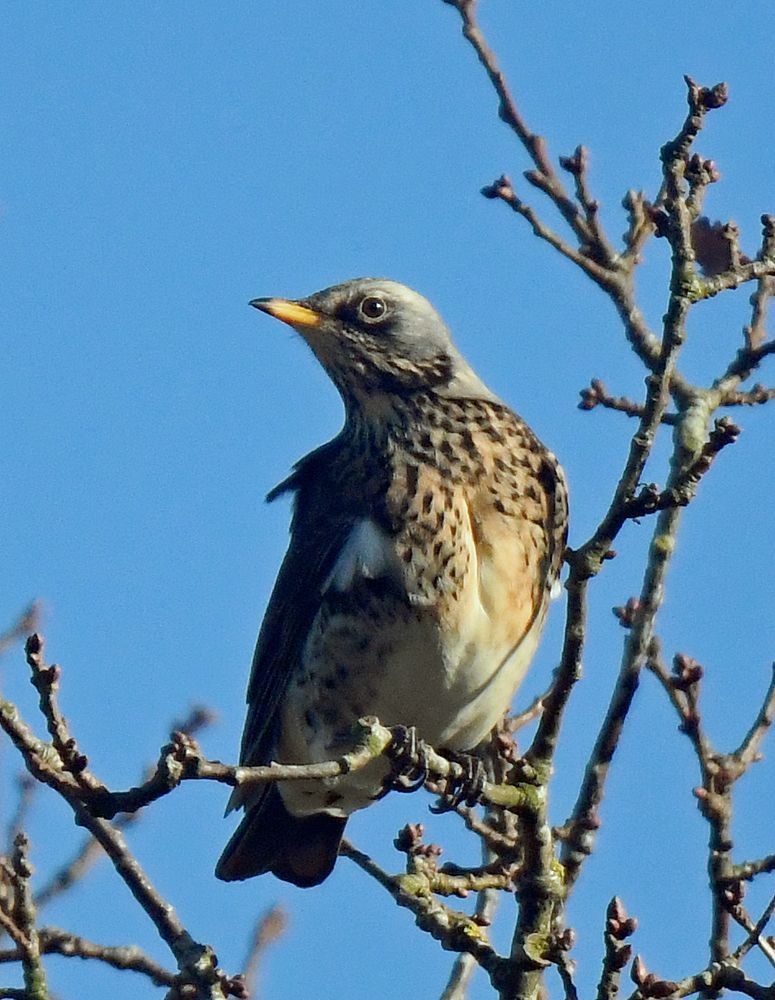
Good Morning All I have been out a few times with my camera, there are a lot of Fieldfares around in large flocks at the moment, the only trouble is they soon take flight so are quite hard to get near, this one was from the car window. Our first meeting back in the New Year will be January 14th opening with a PDI competition, the categories are "Insects" and "Open" judged by Colin Lusby, please send your entries to Harry with a closing date of midnight the 7th January. The following week is the project night where members were asked to take part and using a prime lens take one photograph a month. Myself and Derek have done the project could any members who have taken part let me know please so I have an idea how much time will be left over. We are hoping to enter the N&EMPF club PDI competition and LPA club PDI competition, Harry as usual will organise an entry for us but if you can send him up to six of your very best PDI's when you have time, please. The main rule is it can't have been in the competition before. You may need to send them in two files as LPA use a size of 1920 x 1080 and NEMPF 1600 x 1200. The new project for this year is water, one photograph a month which includes water. The projects will be then shown January 2027. There is also the LPA individual PDI competition you may want to enter, Derek sent details a few weeks ago but information can be found on the Lincolnshire Photographic associations website. Regards Graham

So, why did I swap my Olympus OM-D E-M5 iii camera, and associated lenses for the Fuji XT-3 and lens system, and return to Olympus / OM Systems just a few years later? The Olympus E-M5 iii was, and still is a very capable camera, with a 20Mp micro four thirds sensor, and fully weather proofed, my camera upgrade path was to the OM-D E-M1 iii, but it would have cost me at least £1000, providing me with dual SD cards, and a few extra controls. It was cheaper for me to sell all my Olympus gear, and buy into the Fuji ecosystem, the XT-3 had the dual SD card slots, and promised to have improved image quality. The Fuji lens selection was extensive, and I bought a pair of zoom lenses, and a couple of prime lenses. Later on I bought the Fuji XS-20 as an everyday carry camera, but it was forever warning of overheating. I was content with the Fuji system for several years, I would liked to have photographed more birds, and wildlife, however the reach (focal length) of the 70-300mm Fuji lens was a limiting factor. I took some of my best photographs with the Fuji system, and the Fuji 16-80mm zoom lens was one of my favourite all-round lens. The turning point for me was the launch of the OM Systems OM-1, with a stacked BSI sensor, and subject detection AF, I could have chosen a Nikon, or Canon camera system but the lens selection was limited at that time for the latest mirror-less cameras. I sold all the Fuji gear, and bought a used OM-1 camera for £850, closely followed by a 12-45mm f/4 zoom lens, the 17mm f/1.8 prime (an all time favourite of mine) the 25mm f/1.8, and the 45mm f/1.8 prime. I’ve repurchased the Olympus E-M5 iii, as it’s a great small everyday carry for travel, and general photography. The lens I bought last year was the 60mm f/2.8 macro lens, which has enabled me to take some great insect photos. For bird, and wildlife photography I have been using the Olympus 70-300mm zoom lens, but I’ve just upgraded that to a OM Systems 100-400mm zoom lens, which is stabilised to 7 stops of IBIS on the OM-1, and is fully waterproof, and dustproof. As the micro four thirds sensor is smaller than a full frame sensor, you have to double the focal length to obtain an equivalent viewing angle to a full frame camera, thus the 100-400mm lens becomes equivalent to 200-800mm on a full frame camera. For this coming year I intend to be more focused (no pun intended) on landscape, and wildlife photography, watch this space. Whatever camera, or phone you’re taking photos with just enjoy your hobby, and keep learning and improving.
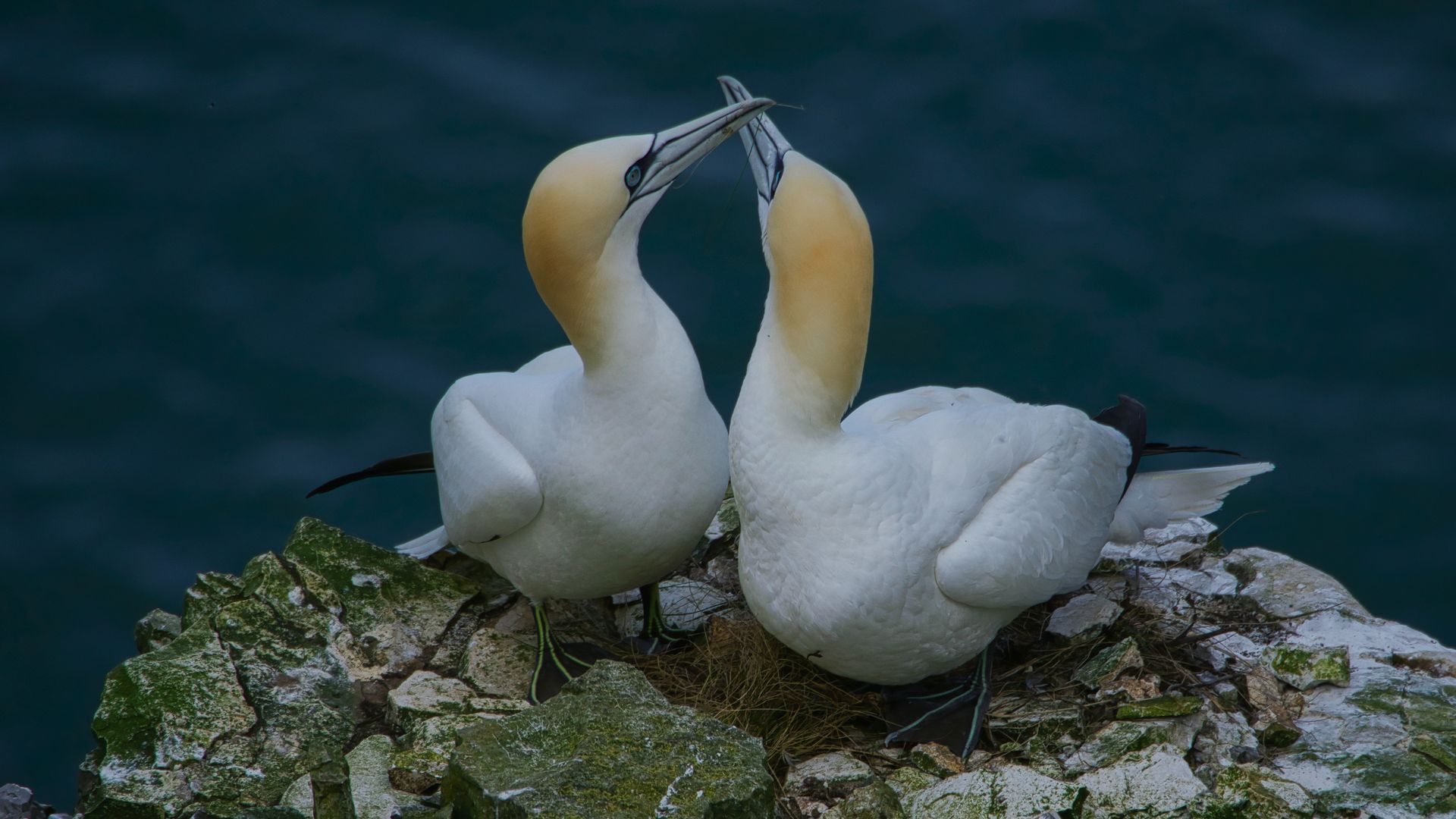
I hope that everyone has had a very good, and healthy Christmas. For our Programme for the New Year, I shall be running a photo editing workshop on 4th February, I will provide each participating member with an SD card containing example images for us to work together in editing. I shall be using three photo editing apps, which are all free to download and use, the first of which is: FastStone – This is the software that our Society uses for displaying images during our PDI competitions. The software is excellent for reviewing a file of .jpg images, basic edits, and resizing of images. The software is unable to develop RAW images, but does show a thumbnail preview which can be useful for culling a set of RAW images. Microsoft Windows only. Canva Affinity – This is excellent for developing a single RAW image, processing Focus Stacking, and Bracketed Exposure images. The software also can be used for layering, and compositing of images. I will be demonstrating the Focus Stacking, Bracketed Exposures, layering and compositing of images. You will need a Canva account to download this free software which runs on Windows, and Apple Mac. RawTherapee – This is an extremely complex photo editor, but I firmly believe that the software can rival anything that Adobe produces without the bloat, and cost. However the software has a steep learning curve, especially with the masking tools. One of the best features for me is the preview ribbon of a set of images at the top of the screen, I also like the tabbed editing tools, it is also possible to batch process basic edits onto a RAW file using a RawTherapee pp3 file. RawTherapee can be downloaded to Windows, Mac, and Linux. To gain the best from the workshop I would ask members to download all three software apps to their laptops. In addition there are YouTube tutorials on the use of RawTherapee, which I would encourage you to watch, and that way we can work together to understand how to produce the best results from the software. Wishing all our members a very happy, and prosperous New Year.
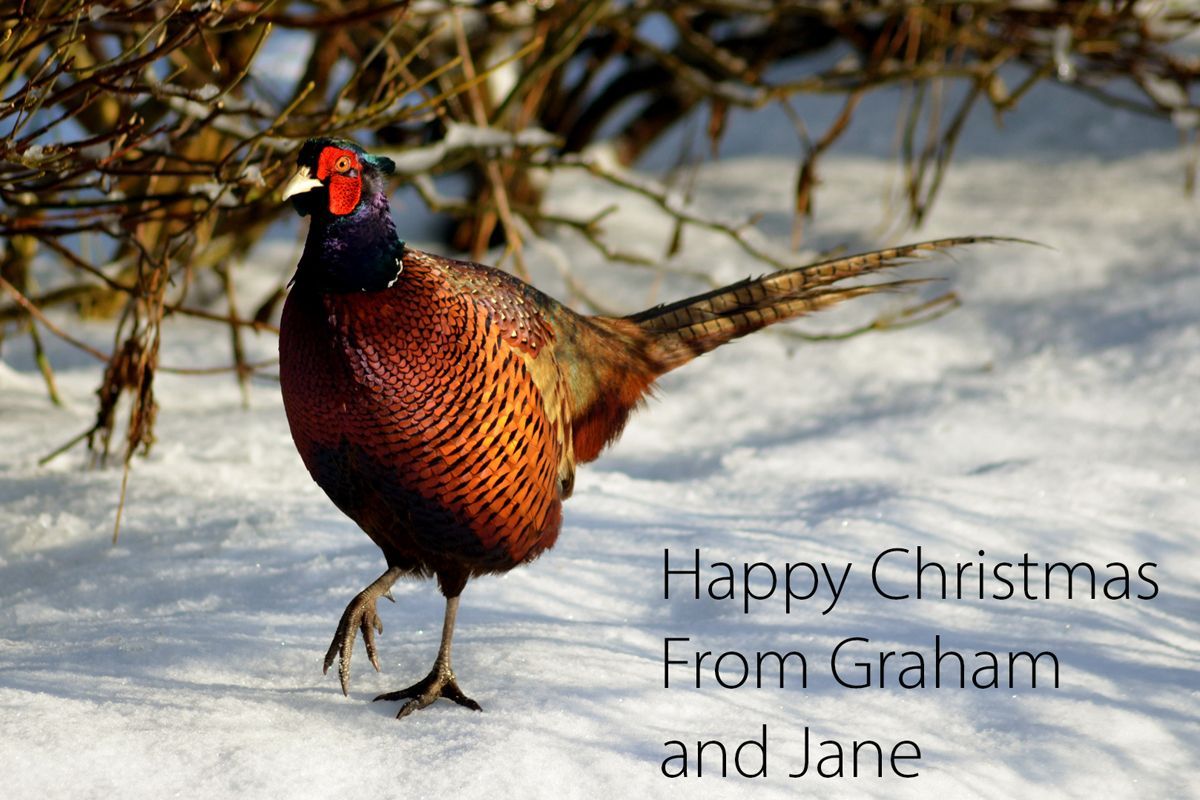
Good Morning, All, We had a very good last meeting before Christmas, thank you to my partner Jane for her hard work preparing the buffet, also thank you to Tony for preparing the quiz, there were some very good questions with Robin and Heather coming out on top with a fantastic 48 points. Thank you to Harry as well for running the raffle and to everyone who donated a prize. We now start our Christmas break but if you get bored there are things that you could be doing. The first meeting back on 14th January will be a PDI competition, with the categories of "Insects" and "Open", you can start sending entries to Harry now, remember three insect entries and three open entries with an (R) after one entry which will be removed if there are too many entries, but you may use it some other time. Derek sent information regarding the individual LPA PDI competition, it would be good if a few members entered. They do like you to go along on the day of the competition as well if you enter or just go along anyway if you didn't. The Print Of The Year (POTY) competition is held in February, so it would be a good time to look through your prints and sort some out ready. For newer members it may seem a funny time of year but our camera club year runs from the beginning of May to the end of April, all rules are under competitions on our website but the main one is that your entry hasn't been in a print of the year competition before, there are six subjects plus best mono in competition, this can be from any of the subjects. The subjects are Landscape, Pictorial, Nature, Photojournalism / Street, Record and Portrait. Regards Graham
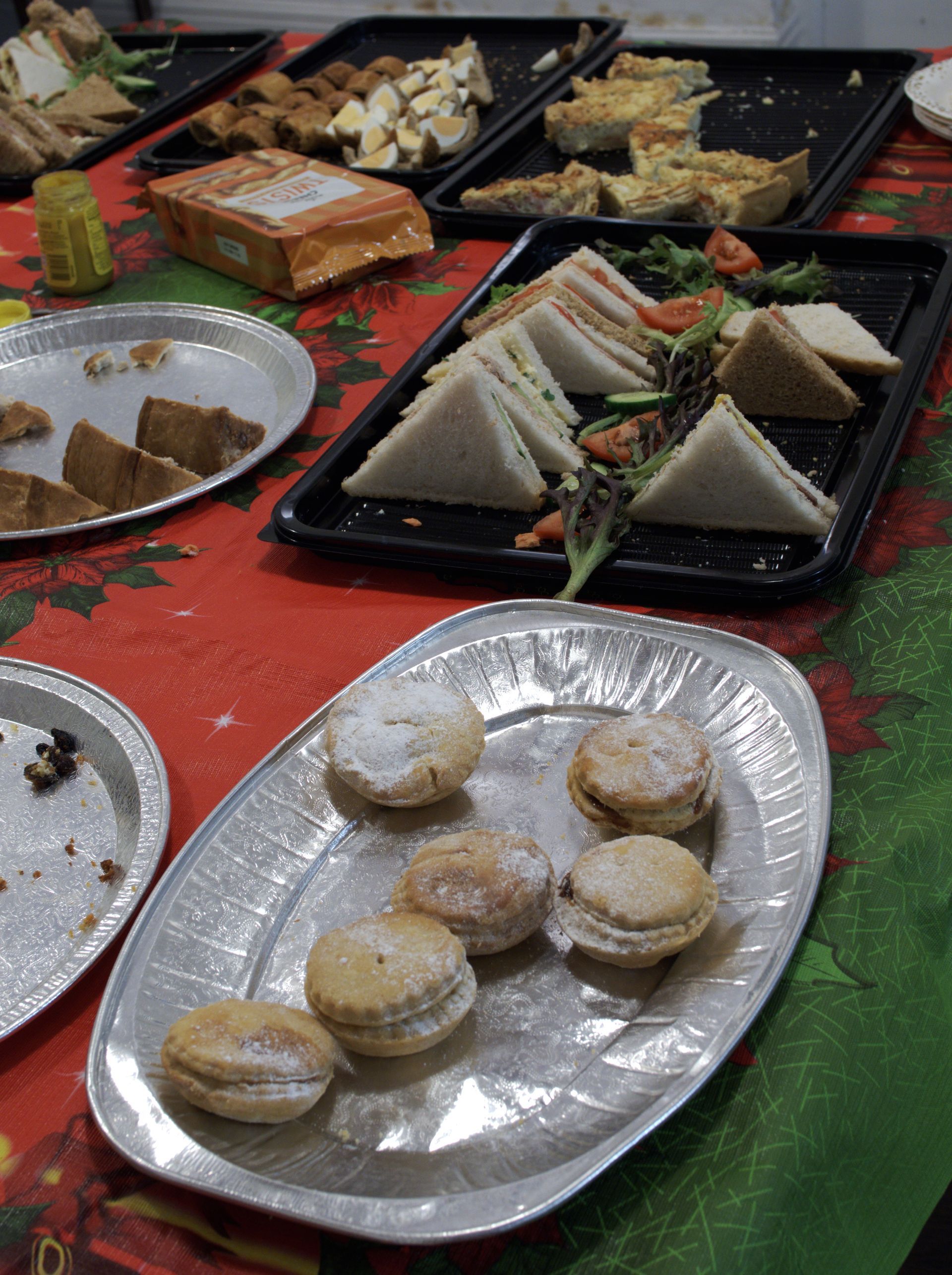
The buffet and quiz evening was one of the highlights of our calendar, it's the culmination of the year's events before the Society takes a Christmas break. The buffet was excellently prepared by Jane, who is Graham's partner, with plenty of delicious food, pork pies, sandwiches, plum bread, with cheese, quiche, mince pies, and cake. Tony Gaskins produced an esoteric quiz, and Robin and Heather scored the most points with 48 points, I scored a miserable 17 points, but we all had a lot of fun with the answers. The raffle raised £47, with some members collecting more prizes than others, amid lots of laughter and banter. Overall it was an excellent evening, enjoyed by all. A big thank you to Jane for the buffet, Tony for the quiz, and Harry for organising the raffle. Wishing all our members, and readers a merry Christmas.

Good Morning, All We did go to the sand racing again last week, the weather was a bit overcast but as no sky is required for this kind of photography, so good action shots are still possible. Last week at the club we held our monthly competition, of prints, with the categories of "People" and "Open". There was a very good entry with some excellent prints. David Whitehouse came first in the People section with Dave Turner winning the Open section. All the results are on our website under competitions with a blog on the evening as well. This week our Christmas buffet and quiz night will be held. The buffet will be provided for you but feel free to bring a drink along with you (a beer or glass of wine if you wish). Dave Mann will also be providing tea and coffee. Tony is doing a quiz for us all so bring a pen and paper if you remember, Christmas jumpers are optional. Harry will be selling raffle tickets, and if you would like to provide a prize please bring it along and give it to Harry. Regards Graham

A print competition was held last night with the categories of “People”, and “Open”. The judge for the evening was Dane Butler, this was his second time judging with us, and he is showing much more confidence in judging at photographic clubs. In the “People” category there was a wide variety of inventive images of people, from solo portrait style, to street, and groups of people, the highest placed print in this category was the “Pride Celebration (Cologne)” taken by David Whitehouse. In the “Open” category Dane had to judge wildlife, portraits, landscape, macro, and architectural prints, I thought he did a superb job, his choice for the top spot was “Cloud Inversion Summit of Snowdon” by Dave Turner. The website Competition page has been updated with the images, and results.

